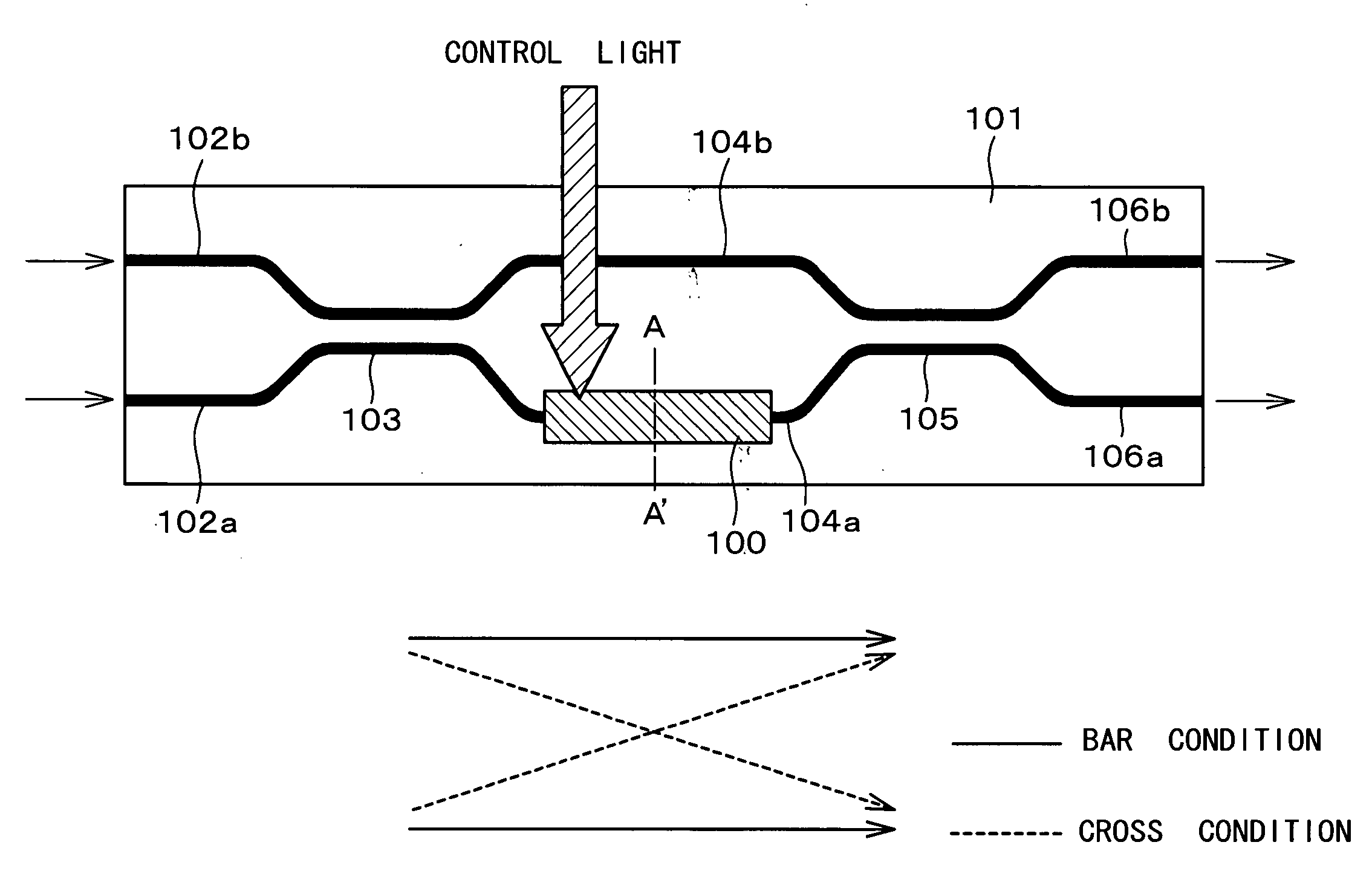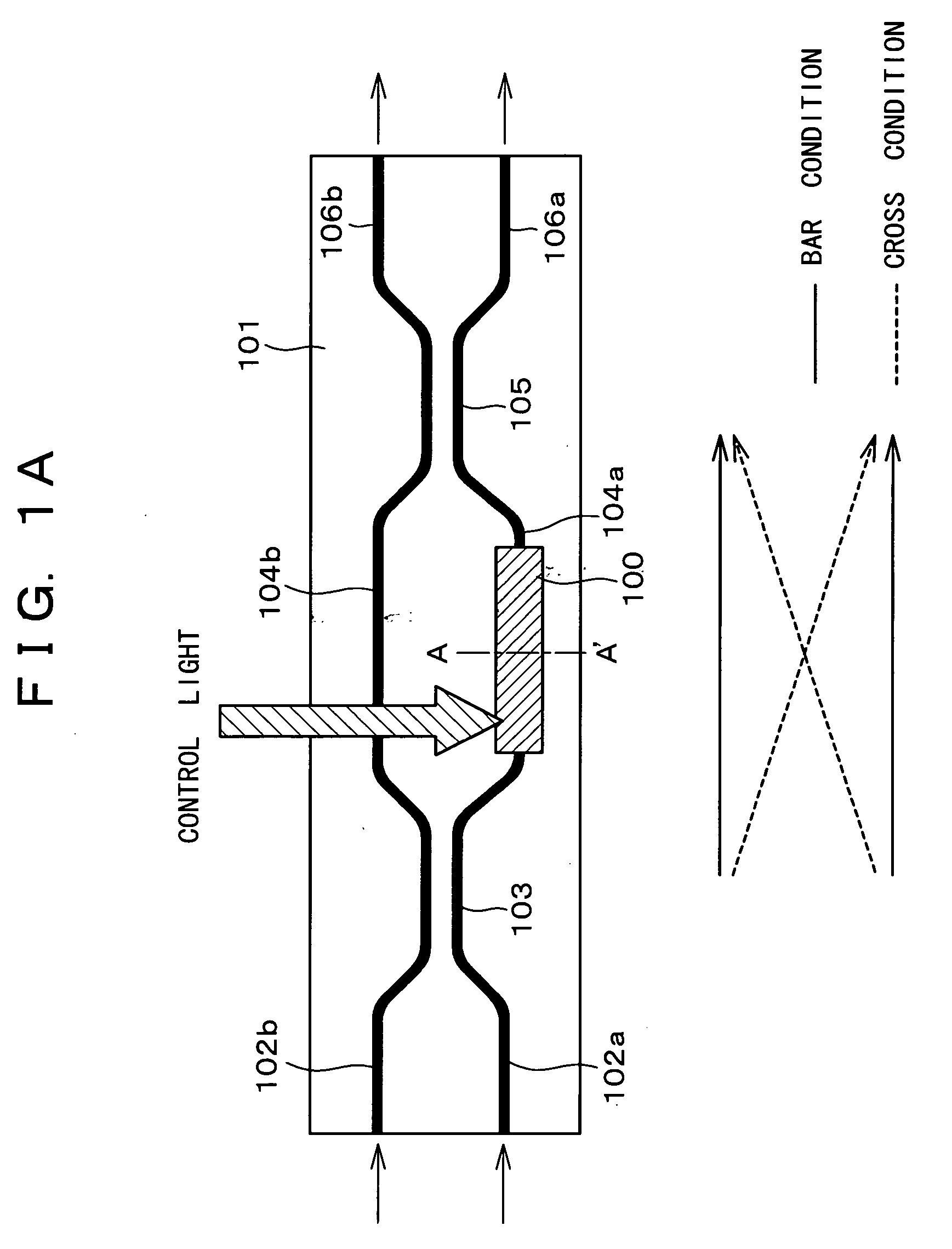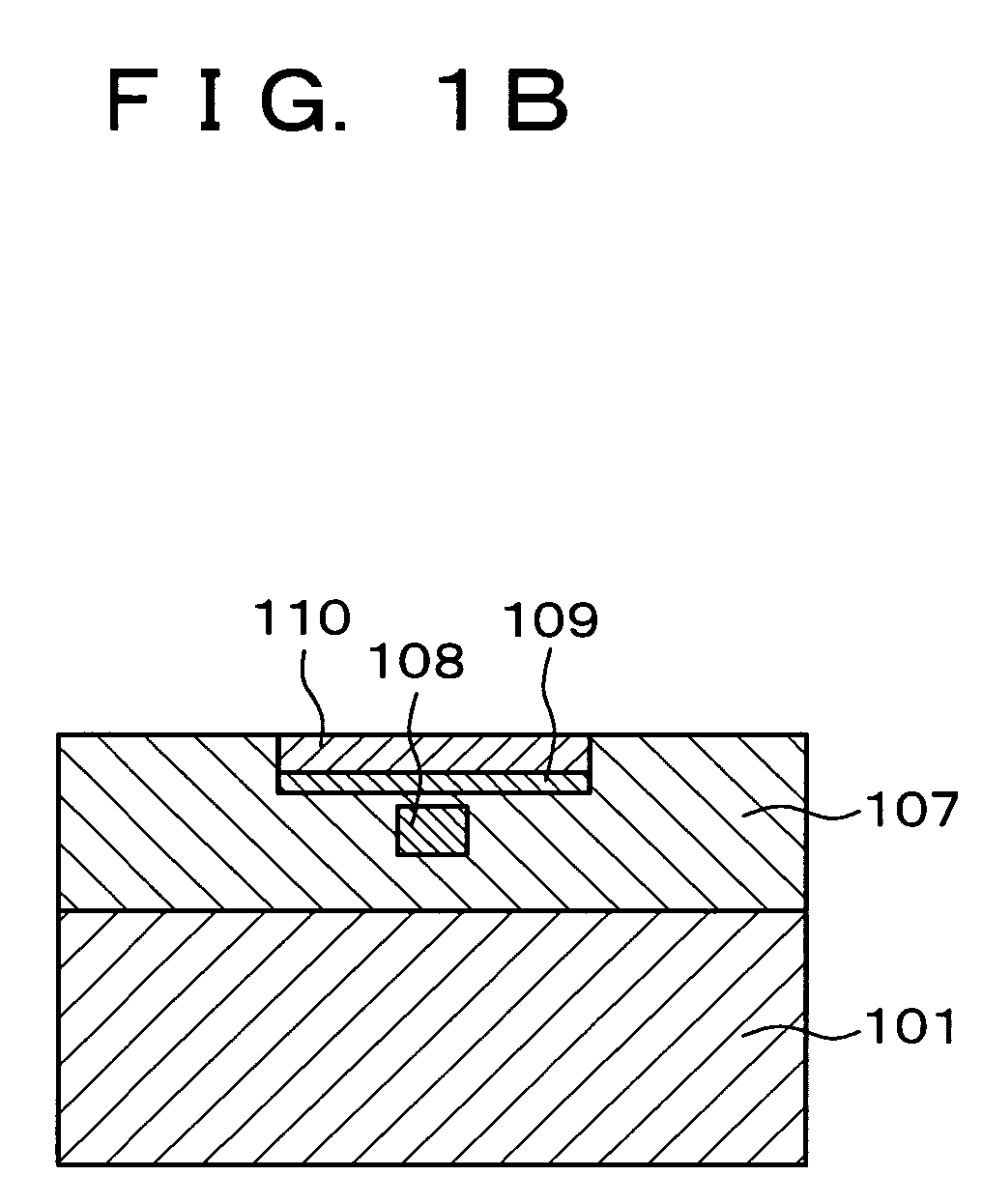Optical switch
a technology of optical switches and switches, applied in the field of optical switches, can solve the problems of high power consumption of optical switches, slow switching speed (several seconds or more), propagation loss, etc., and achieve the effect of low power consumption and higher speed
- Summary
- Abstract
- Description
- Claims
- Application Information
AI Technical Summary
Benefits of technology
Problems solved by technology
Method used
Image
Examples
embodiment 1
[0057]FIG. 1A to FIG. 1J are views showing configurations of an optical switch according to Embodiment 1 of the present invention. FIG. 1A is a top view thereof. The optical switch of Embodiment 1 is composed of a quartz substrate 101, first and second input waveguides 102a and 102b, a first directional coupler 103, first and second arm waveguides 104a and 104b of a Mach-Zehnder interferometric circuit, a second directional coupler 105, first and second output waveguides 106a and 106b, and a phase change material portion 100 as a region. Details of this phase change material portion 100 as a region are shown in the following.
[0058]FIG. 1B is a sectional view along A-A′ of FIG. 1A. An optical switch according to Embodiment 1 in this section is composed of a quartz substrate 101, a cladding 107, a core 108, a phase change material portion 109, and a sealing resin 110. The sealing resin 110 has a refractive index equivalent to that of the cladding 107, seals the phase change material ...
embodiment 2
[0070]FIG. 2A to FIG. 2D are top views showing configurations of an optical switch according to Embodiment 2 of the present invention.
[0071]FIG. 2A shows a configuration where phase change material portions are symmetrically arranged on two arm waveguides. Since this is a symmetrical structure, it is easy to equalize the respective arm waveguides in propagation loss, which makes it possible to raise the extinction ratio of the optical switch. In addition, it is also possible to irradiate light onto both arm waveguides so as to cause a push-pull operation by changing one from an amorphous state to a crystal state and the other from a crystal state to an amorphous state.
[0072]FIG. 2B is a configuration where phase change material portions are provided at an optical coupling part of a directional coupler. Although fabrication accuracy is required, this is suitable for a reduction in size.
[0073]FIG. 2C is a configuration where phase change material portions are provided at parts of a...
embodiment 3
[0075]FIG. 3 is a sectional view showing a configuration of an optical switch according to Embodiment 3 of the present invention. In the optical switch of Embodiment 3, a phase change material portion 109 is processed into thin lines having roughly a 10 nm to 200 nm width or island-shaped grains having a diameter of 10 nm to 200 nm. Phase change characteristics of the phase change material portion 109 greatly change depending on its grain diameter. By such a miniaturization, phase transition time can be reduced to construct a high-speed switch.
PUM
 Login to View More
Login to View More Abstract
Description
Claims
Application Information
 Login to View More
Login to View More - R&D
- Intellectual Property
- Life Sciences
- Materials
- Tech Scout
- Unparalleled Data Quality
- Higher Quality Content
- 60% Fewer Hallucinations
Browse by: Latest US Patents, China's latest patents, Technical Efficacy Thesaurus, Application Domain, Technology Topic, Popular Technical Reports.
© 2025 PatSnap. All rights reserved.Legal|Privacy policy|Modern Slavery Act Transparency Statement|Sitemap|About US| Contact US: help@patsnap.com



